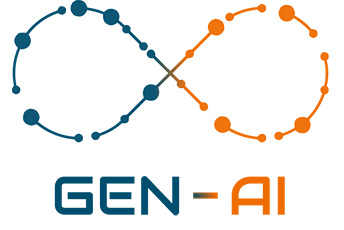Evaluation of Emotions and Intentions in Interactions Related to Claims and Policies Using the API REST /virtualbot/sentiment/sentiment_analisys
Market: Insurance companies, claims adjusters.
Description:
The API REST /virtualbot/sentiment/sentiment_analisys, using advanced OCR and a multimodal LLM, allows real-time analysis of customers’ emotions and intentions during their interactions with insurance companies. The emotional analysis helps identify frustration, anxiety, or confusion in customers during the claims process, while intention analysis helps better understand their specific needs, such as speed in resolving claims or seeking more information about their policies. This enables quicker and more efficient responses, improving customer satisfaction and optimizing claims management.
The system can analyze both written communications (emails, claims forms) and verbal conversations with claims adjusters. This provides insurance companies with a comprehensive view of the customer’s emotional state and intentions, allowing them to optimize processes and improve the overall customer experience.
Specific Benefits:
- Improved Customer Care and Satisfaction:
- Detection of Frustration and Anxiety: The system quickly identifies if a customer is frustrated or anxious during the claims process, enabling claims adjusters to act proactively to resolve the situation and calm the customer, improving their experience.
- Personalized Responses: Intention analysis allows adjusting responses according to the customer’s needs, offering more personalized solutions and reducing wait times, which enhances overall customer satisfaction.
- Reduced Claims Resolution Time:
- Prioritization of Critical Claims: The system detects emotions such as frustration or urgency, enabling insurance companies to prioritize claims requiring immediate attention, speeding up the resolution of critical cases and increasing operational efficiency.
- Optimized Workflow: By understanding the customer’s intentions early on, claims adjusters can avoid unnecessary delays and resolve claims quickly and efficiently.
- Improved Customer Retention and Loyalty:
- Proactive Intervention: The ability to detect negative emotions allows insurance companies to intervene before issues escalate, preventing customers from escalating complaints publicly and protecting the company’s reputation.
- Strengthening the Customer Relationship: By offering personalized solutions and acting proactively, insurers can build greater trust and loyalty with customers, strengthening long-term relationships.
- Optimization of Claims Adjustment Processes:
- Identifying Specific Customer Needs: Intention analysis helps identify specific customer needs during the claims process, such as the need for quick responses or better understanding of the policy. This enables adjusters to offer more targeted and appropriate responses.
- Detection of Opportunities for Process Improvement: By analyzing recurring emotions of frustration or confusion, insurers can identify areas in their claims adjustment processes that need improvement, increasing efficiency and reducing errors.
- Enhanced Communication and Transparency:
- Clearer and More Effective Communication: Detecting confusion in interactions allows insurers to adjust the clarity of their communication, providing more detailed explanations and ensuring that customers fully understand their policies and claim responses.
- Increased Transparency: Emotional analysis also allows insurers to be more transparent in their responses, helping to build trust and reduce customer dissatisfaction during stressful moments.
- Early Detection of Issues in Policies:
- Detection of Recurring Issues: The system can detect negative emotions from multiple customers on the same topic, enabling insurance companies to identify recurring issues in policies or processes and address them before they lead to greater dissatisfaction.
- Problem Prevention: By identifying early emotions such as anxiety or confusion during policy renewal or coverage explanations, insurers can adjust how they communicate these aspects to prevent misunderstandings and improve customer perception.
Key System Integrations:
- Claims Management Systems (CMS):
- Recommended Platforms: Guidewire, Duck Creek, ClaimCenter.
- How it works: Emotional and intention analysis integrates with claims management systems to provide more detailed tracking of the customer’s emotional state, prioritizing critical claims and improving operational efficiency.
- Customer Relationship Management (CRM) Platforms:
- Recommended Platforms: Salesforce, HubSpot, Microsoft Dynamics 365.
- How it works: By integrating with a CRM, the system enriches customer profiles with information about their emotions and intentions, improving personalized responses and optimizing customer care.
- Workflow Automation Tools:
- Recommended Platforms: Power Automate, UiPath, Zapier.
- How it works: The system can integrate with automation platforms to automatically prioritize critical claims based on detected emotions, reducing response times and improving productivity.
- Customer Communication Platforms:
- Recommended Platforms: Zendesk, Freshdesk, Genesys.
- How it works: Emotional analysis enables real-time alerts to customer service agents when frustration or confusion is detected, improving response capability and ensuring early intervention.
Conclusion:
The API REST /virtualbot/sentiment/sentiment_analisys is a powerful tool for the insurance sector, enabling real-time analysis of customer emotions and intentions during interactions related to claims and policies. By improving customer satisfaction through personalized responses and optimizing the claims process, insurance companies can offer faster, more empathetic, and efficient service, enhancing customer loyalty and improving proactive claims management.


